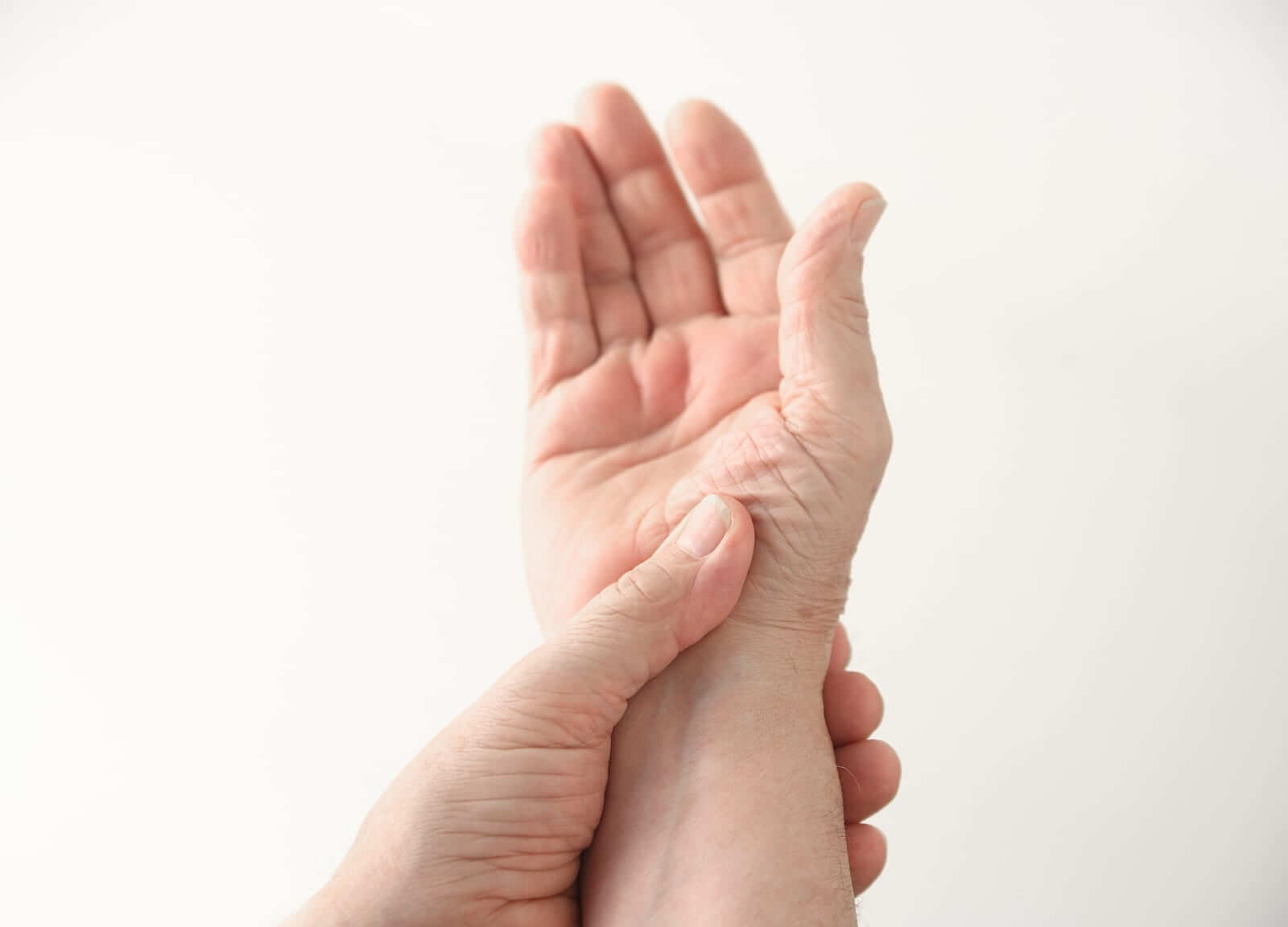People with diabetes are up to fifteen times more likely to get carpal tunnel syndrome. This condition is a type of neuropathy that affects the forearm, wrist and hand. Discover why people with diabetes are more prone to getting carpal tunnel syndrome.
- Carpal tunnel syndrome is a type of entrapment neuropathy. The median nerve becomes compressed and entrapped in the carpal tunnel, a rigid tunnel located at the base of the hand. The median nerve runs from your forearm through the carpal tunnel and into your hand. When the surrounding tendons become thick or swell, the tunnel narrows and pressure is put on the median nerve at the wrist. This discomfort can radiate up your arm, causing discomfort during routine tasks such as typing and lifting. It can also lead to weakness and numbness as well as pain in the wrist and hand.
- There was a time when experts believed people got carpal tunnel syndrome from excessive computer keyboarding. Now carpal tunnel is associated with medical conditions such as diabetes, rheumatoid arthritis, osteoarthritis and hypothyroidism. It is also linked with mental stress, smoking, obesity, alcohol abuse and genetic factors. People with diabetes benefit from maintaining a healthy weight and quitting unhealthy habits such as smoking and excessive alcohol consumption. Minimize stress by exercising at least 30 minutes, 5 times a week and incorporate stretching including tai chi and yoga. Add meditation and breathing techniques for stress reduction.
- The reason for the swelling associated with carpal tunnel syndrome is still unknown. Women are three times more likely to develop the condition than men because they have a narrower carpal tunnel space. Swelling is also associated with the temporary fluid retention that occurs during pregnancy. Diabetes can play a major role. Up to twenty percent of people with diabetes also have carpal tunnel syndrome. Conversely, it is more likely for people with carpal tunnel to develop diabetes. Inflammation is a key factor in both conditions.
- Research has revealed high blood glucose levels can lead to carpal tunnel problems. When blood sugar rises, glucose attaches to the proteins in the tendons of the carpal tunnel. They become inflamed and the tendons cannot slide freely. It is important to maintain healthy blood sugar levels. Use a glucose meter with test strips to check your blood sugar throughout the day. Report any highs or lows immediately to your health care team.
- Be aware of the symptoms of carpal tunnel such as a tingling sensation that feels like pins and needles, a burning feeling or a loss of sensation in your hand. These are indications of nerve problems. You might have pain that goes up into your forearm that can weaken your grip. It can be painful to flex or curl your hands or wrists. If you experience these symptoms, tell your doctor. The doctor may try to get a response called Tinels sign by tapping on the top of your median nerve. If it causes a shocking or tingling feeling, you have carpal tunnel. Another test that might be done is the Phalen’s test. It can be difficult to diagnose carpal tunnel syndrome in people with diabetes because of underlying peripheral neuropathy that is unrelated to carpal tunnel. As a result, a nerve conduction study might need to be done to get an accurate diagnosis.
- When you are diagnosed with carpal tunnel syndrome, it helps to rest your affected wrist and hand. Wearing a splint, especially at night, can prevent flexing that could cause discomfort. The doctor may recommend a short course of anti-inflammatory, non-steroid drugs such as Tylenol or aspirin. If they are ineffective, the doctor may try cortisone (steroid) injections in the wrist to reduce swelling. Remember that steroids can increase blood sugars temporarily. This is used in mild or moderate cases and can provide relief for up to a month. Vitamin B6 supplements can be helpful as well as acupuncture and chiropractic care. Yoga may minimize pain and help boost your grip strength. In persistent cases, surgery may be a consideration.
It is crucial for people with diabetes to get treatment for carpal tunnel syndrome to avoid permanent nerve damage such as atrophied thumb muscles. If you suspect you have carpal tunnel, talk to your doctor and get a checkup right away.
People with diabetes are more prone to carpal tunnel syndrome. It is essential to get a diagnosis as soon as possible to avoid continued inflammation and neuropathy. With proper treatment and a few basic lifestyle changes you can live comfortably with diabetes and carpal tunnel syndrome.







Hi Antonio,
There is no exact time when you may get carpal tunnel syndrome when you have diabetes. You may never get it. This article was just to let you know you are more at risk for it when you have diabetes. The best way to prevent any complications related to diabetes including carpal tunnel syndrome is to control your blood sugars. Remember, carpal tunnel can also be caused by over use of your hands such as being on the computer all day. Diabetes is just one cause of it. When you have diabetes, you are more at risk for systemic inflammation which is a possible reason for carpal tunnel as well. Be aware of symptoms of tingling, pain or numbness in your fingers and or hands, and report it to your physician if it continues.
Best of luck,
Nurse Robbie
If u r a diabetic how long before u develope carpal tunnel syndrome?